Best 65-inch TVs 2024 — July top picks
The best 65-inch TVs of 2024 are here!
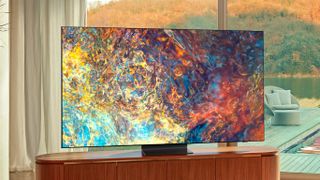
1. The list in brief
2. Best 65-inch TV
3. Best OLED TV
4. Best value TV
5. Best QLED TV
6. Best cheap TV
7. Best QD-OLED TV
8. Test results
9. How to choose
10. How we test
The best 65-inch TVs are some of the most sought after displays in the market, sitting at the perfect size for most households while still offering ample screen real estate for most entertainment. Of course, it's clear that TVs are getting bigger and some buyers are no sooner turning to the best 75-inch TVs and even the best 85-inch TVs, but the 65-inch configuration still remains one of the most cost-effective and value-heavy TV sizes.
When on the hunt for the most useful 65-inch displays, you'll want to consider several features first, namely native refresh rate, HDMI 2.1 ports, and HDR support. You may also want several other add-ons, like an ATSC 3.0 tuner for NextGen TV access, or WiFi 6e for futureproofed connectivity.
You should aim for a 4K 65-inch TV that at least has two HDMI 2.1 inputs on a 120Hz refresh rate at the minimum, though 60Hz is suitable in most case. Those included on this list will be more than enough for most buyers, leveraging a wide swath of features on an interface that gives you access to all of the best streaming services.
We have years of testing data and reviews under our belts, vetting an extensive list of TVs and streaming devices across a wide range of verticals. You can trust us to find the best 65-inch TVs for most needs, looking at everything from budget options to the more premium OLED displays.
The quick list
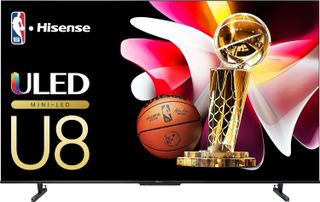
Picture ★★★★★
Features ★★★★☆
Value ★★★★★
Like its predecessor, the award-winning Hisense U8K from 2023, the U8N is an absolute dream TV at a reasonable price. It delivers class-leading brightness and color saturation for right around $1,000.
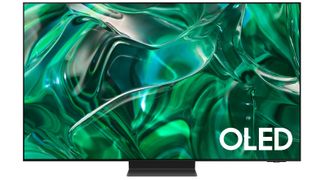
Picture ★★★★★
Features ★★★★★
Value ★★★★☆
If the budget stretches a bit further, the Samsung S95C OLED takes everything we love about OLED screens and dials it up to 11. It's brighter than most other OLED TVs. It's more colorful. And it's even better for gamers.
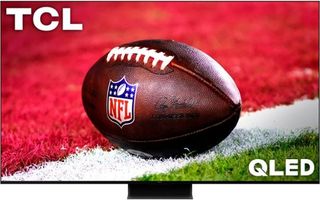
Picture ★★★★☆
Features ★★★★★
Value ★★★★★
Now that you can't pick up a TCL 6-Series Mini-LED TV, the TCL QM8 is the best value in TVs. It can be found for under $1,000 and it delivers pretty much all of the same features of its 6-Series predecessor.
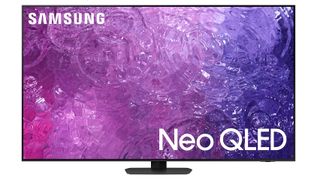
Picture ★★★★☆
Features ★★★★★
Value ★★★★☆
Samsung's QLED TVs may not be as frequently talked about as they once were, but they're still some of the best TVs on the planet, and the 65-inch Samsung QN90C Neo QLED is no exception. We highly recommend it.
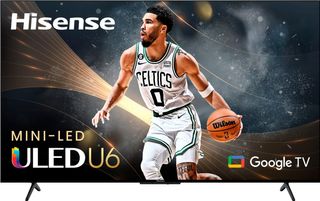
Picture ★★★☆☆
Features ★★★★☆
Value ★★★★★
Not every 65-inch TV needs to cost more than $1,000. While there are a lot of cheap TVs out there, almost none of them deliver very good contrast, color accuracy or brightness. The U6K is the exception.
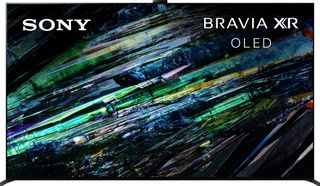
Picture ★★★★★
Features ★★★★★
Value ★★★☆☆
Look, if it wasn't several thousand dollars, the Sony Bravia XR A95L would be the best 65-inch TV. Unfortunately, it's the most expensive TV on the list by a country mile. It's glorious to behold, but it sure is pricey.
The best 65-inch TVs you can buy today
Why you can trust Tom's Guide
Best 65-inch TV
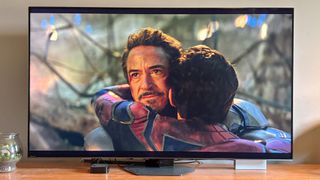
Specifications
Reasons to buy
Reasons to avoid
Everyone shopping for a 65-inch TV wants the (nearly) the same thing: Good picture quality at a reasonable price. Yes, there are TVs that you could drop a few thousand on that will look wonderful (cough, Sony A95L OLED) but most folks simply want a screen that works well, looks impressive and doesn't break the bank.
The Hisense U8N is that TV. It's a cutting-edge Mini-LED TV with several thousand contrast control zones for the best possible black levels while maintaining a peak brightness over 2,000 nits. It sports all of the essential streaming services on-board with its built-in Google TV smart platform, and it supports both Dolby Vision and the latest VRR technology. Add on top of all that a built-in ATSC 3.0 tuner that makes this TV capable of grabbing NEXTGEN TV content from over-the-air.
In our test results, the Hisense U8N delivered a peak brightness of 3,296 nits for some of the best-looking HDR content we've seen at this price range while covering 82.07% of the widest Rec2020 color gamut. It had slightly higher input lag than we'd like to see (13.1ms) but it was still very much under the 20ms needed for smooth gameplay. Finally, its color accuracy out of the box wasn't the best of any TV, but that's fixable with a few tweaks.
There are some slight hiccups in performance — older HD/SDR content doesn't look as good here as it will on, say, Samsung or Sony TVs with the newest AI-driven upscaling algorithms — but, for the price, you won't find any better option.
Read the full review: Hisense U8N Mini-LED TV
Best OLED TV

Specifications
Reasons to buy
Reasons to avoid
The 65-inch Samsung S95C elevates OLED technology to a new level. You know you're going to get the best black levels. You know it's going to give you the best contrast. You know it's going to offer some of the best color saturation and color accuracy out of the box. But now you can add better brightness to the list as well.
The Samsung S95C OLED is a new breed of QD-OLED TVs, a combination of quantum dot and OLED that take the best of both worlds. In our lab tests, the S95C was able to reproduce about 141.5% of the Rec 709 color space in standard mode. That's not quite as impressive as the Hisense's 80% of Rec2020, but still exceptional. In terms of color accuracy, the S95C is almost dead-on with a Delta-E accuracy score of 1.4 (with closer to 0 being best) in Filmmaker mode.
At the 65-inch screen size, the S95C is a really exceptional TV with a lot of great features and strong performance, and was one of the top-scoring TVs of 2023.
Read the full review: Samsung S95C OLED
The best value TV
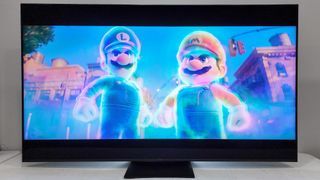
Specifications
Reasons to buy
Reasons to avoid
If you do a lot of digging around other sites, you'll see them recommending the TCL QM8 as the best 65-inch TV. And while we agree that it's one of the top TVs, the U8K has a few more advantages going for it, including the ATSC 3.0 tuner, better sound quality and more consistent picture quality. That's not to say the QM8 is a bad TV, because at this price point it's a steal, it's just up against some tough competition.
So why is it #3 on the list? In our tests, the QM8 delivered incredible results. In 5%, 10% and even 25% window sizes the QM8 could hit over 2,000 nits of peak brightness. It can cover around 80% of the Rec 2020 color space. And it comes with two HDMI 2.1 ports for 4K/120Hz gameplay. It's a very similar TV to the Hisense U8K in pretty much every metric, even the not-so-good ones. Like the U8K, the QM8 had an out-the-box Delta E score of 4.4614, which means you'll have to do some tweaking.
Again, nothing's a deal breaker here, and if you want an alternative to the U8K made by TCL, the QM8 is a very solid second choice.
Read the full review: TCL QM8 Mini-LED TV
The best QLED TV
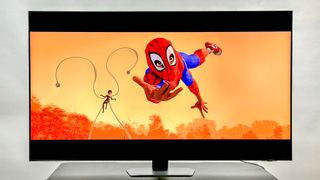
Specifications
Reasons to buy
Reasons to avoid
There's a few TVs that could occupy the 4th spot on this list. The Sony X90L certainly comes to mind as one possibility. But the Samsung QN90C is simply too good to ignore. Some motion processing issues aside, this is the best Samsung QLED TV.
At around $1,600 for the 65-inch model, it's not the most affordable option out there (which is why we try to steer readers towards the QM8 or Hisense U8K) nor is Tizen our favorite smart platform compared to Google TV, but the QN90C does deliver some incredible perks for the price. The biggest and most important of these upgrades are the four full-spec HDMI 2.1 ports for 4K/120Hz gaming and its excellent off-axis color saturation. It has similar test results to the other QLED TVs on the list, but these extra additions definitely help set it apart from the bunch.
Now if only Samsung would lower the price some...
Read the full review: Samsung QN90C Neo QLED TV
Best Cheap TV
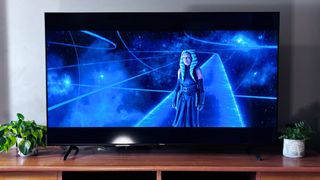
Specifications
Reasons to buy
Reasons to avoid
With all the talk around great budget models, you must be wondering what's the absolute cheapest 65-inch TV we'd recommend. The answer is the Hisense U6K. It's a Mini-LED TV that you can get for right around $500. It beats any model from Insignia or Onn, and while there are some TCL TVs that come close, the U6K beats them in most performance metrics.
Speaking of, in our lab tests the Hisense U6K was able to cover around 81% of the Rec2020 Color Space, which is unbelievable given the price tag, and had a fairly low input lag of 10.2ms. Its overall brightness and color accuracy were worse than the other models on this list, but there's still a lot to love about a TV that performs at this level for around $500.
Read the full review: Hisense U6K Mini-LED TV
The best QD-OLED TV
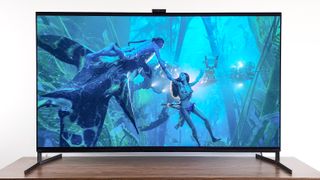
Specifications
Reasons to buy
Reasons to avoid
If I didn't have a mortgage to pay off, I'd highly consider buying the $3,300 65-inch Sony A95L OLED. It is a superb TV. Probably better than every other model on this list. But its price is three times that of our top pick, and twice as much as every other model. It's a great TV, absolutely, but it's not two or three times as good as the rest of the TVs mentioned above.
So why, exactly, does it cost as much as it does? The A95L OLED uses a QD-OLED panel just like the Samsung S95C above, but Sony takes things a step further by adding a ton of picture and audio-enhancing technology on top. There's the Cognitive XR Processor that creates truer-to-life colors and better motion handling, there's extra-wide viewing angle technology that prevents off-axis color desaturation, there's a Brightness Booster Max technology that helps push every possible pixel to its highest light output...the list goes on and on.
There are some downsides here that feel semi-inexcusable at this price (only two HDMI 2.1 ports, really Sony?) but those little critiques don't take away from how truly amazing this QD-OLED TV is for the lucky few who can afford one.
Read the full review: Sony Bravia XR A95L
Best 65-inch TV Test Results
Best 65-inch TV test results
| TV | Peak Brightness (tested) | Delta-E (tested) | BT2020 Color Volume (tested) | Input Lag (tested) |
| Hisense U8K | 2004.58 nits | 4.4614 | 80.41% | 13.2ms |
| TCL QM8 | 2344.55 nits | 3.232 | 76.5% | 16ms |
| Samsung QN90C | 1546.55 nits | 2.2404 | 77.15% | 9.2ms |
| Hisense U6K | 525.14 nits | 3.5783 | 80.98% | 10.2ms |
| Sony A95L OLED | 1260.79 nits | 2.856 | 89.56% | 16.1ms |
| Samsung S95C | 1369.10 nits | 1.4542 | 77.35% | 9.2ms |
How to choose the best 65-inch TV for you
How to choose the best 65-inch TV for you
If you're in the market for a new TV, you'll want to consider a few factors before you spend your money. Our TV buying guide breaks down the fine details of what features matter and what distinguishes a great TV from one that's just okay. For a 65-inch set we strongly recommend going with 4K resolution. There are a few older 1080p models still available, but they simply aren't a good value today. And while 8K TVs are hitting the market in the 65-inch size, it will still be some time before 8K resolution gets mainstream support.
Size and space: For a 65-inch 4K TV you'll want to sit between 8 to 9 feet from the screen to hit the sweet spot of being close enough to enjoy all the sharp details, but not so close that you'll be able to make out the pixels that make up the picture.
Price: A basic 65-inch 4K smart TV will range between $800 and $2,300, depending upon how premium your tastes run. The TCL 6-Series Roku TV (R635) is the best budget model we've seen in this screen size, but if you want the best picture available, the LG CX OLED is our top pick for its combination of stellar picture quality and deep feature set.
Features: For the best picture, we recommend getting a set that offers high dynamic range (HDR) support. HDR10 is the base standard, while Dolby Vision is a higher-caliber format, and we recommend opting for Dolby Vision support when you have the choice.
Ports: Port selection is another chief concern. More HDMI ports will let you connect more devices, like game consoles and satellite boxes. And if you have a soundbar, you'll want to connect it using an HDMI port with eARC.
Software: Finally, you'll want to find a smart TV platform that you like. Companies like Samsung and LG use their own proprietary software, but many use more broadly available software, like Android or Roku TV. The biggest issue is app selection, as some specific apps you may want won't be available on every smart TV platform, or there may be a months-long delay for a new service to come to some smart TVs after launching on others.
But you'll also want to look into more advanced features, like smart home control, video conferencing capability, and other features that may be brand exclusive, or at least unevenly distributed between premium and budget sets.
If you've narrowed down your TV shopping by brand, price range or screen size, check out our picks for the best TVs in each.
Best TVs | Best 4K TVs | Best smart TVs for streaming | Best TVs for gaming
The best TVs under $1000 | The best TVs under $500
Best TV brands | Best Samsung TVs | Best TCL TVs | Best LG TVs | Best Roku TVs | Best OLED TVs | Best QLED TVs | Best 8K TVs
The smallest smart TVs | Best 43-inch TVs | Best 50-inch TVs | Best 55-inch TVs | Best 70-inch TVs | Best 75-inch TVs | Best 85-inch TVs
And don't forget to watch out for the latest TV reviews.
How we test the best 65-inch TVs
How we test 65-inch TVs
When it comes to evaluating TVs, we're serious about getting it right. That's why every TV we review is put through a rigorous testing process that measures key standards of picture quality and performance.
Our lab tests involve testing for color accuracy and color gamut using an X-Rite i1 Pro spectrophotometer, an AccuPel DVG-5000 video test pattern generator and SpectraCal CalMAN Ultimate calibration software. These tools are relied on by professional calibrators throughout the industry, and we've paired them with custom workflows to gather the information needed for our reviews. These measurements are taken first in standard mode to simulate the average watching experience, and then taken again in other display modes to find the top color and brightness performance offered by each set.
Our testing measures contrast and maximum brightness, as well as lag time. Using a Leo Bodnar Video Signal Input Lag Tester to test video signal delay, we time how long it takes for content to travel from the original video source to the screen, measured to the millisecond. Shorter response times equate with faster gaming performance, letting us objectively know which TVs are better for gaming.
We use all of these objective test results to make comparisons about quality and performance between different TVs, but our evaluation doesn't end there. We also spend hours with each set, watching shows and movies, and using carefully selected video samples to highlight the strengths and weaknesses of each set and help us tell you which TVs look and sound the best in a real home viewing environment.
And there's more to today's TVs than just viewing, so we also check out the smart TV functions and evaluate everything from the interface to the remote control design. This lets our reviews speak to the technical capabilities of today's smart TVs and how they fit into your connected home.
- Smart TV FAQ: Everything you need to know
- The best gaming TVs for consoles old and new
Sign up to get the BEST of Tom’s Guide direct to your inbox.
Upgrade your life with a daily dose of the biggest tech news, lifestyle hacks and our curated analysis. Be the first to know about cutting-edge gadgets and the hottest deals.

Nick Pino heads up the TV and AV verticals at Tom's Guide and covers everything from OLED TVs to the latest wireless headphones. He was formerly the Senior Editor, TV and AV at TechRadar (Tom's Guide's sister site) and has previously written for GamesRadar, Official Xbox Magazine, PC Gamer and other outlets over the last decade. Not sure which TV you should buy? Drop him an email or tweet him on Twitter and he can help you out.
- Ryan EppsStaff Writer
-
ToesNose "you'll get the best viewing experience seated 60 inches (5 feet) from a 65-inch 4K screen" Really 5' from a 65" TV for the best viewing experience, is that with or without my Mr. Magoo glasses? ROFLReply -
JimmyPeanuts I wouldn't buy the LG tv. I feel obligated to share my experience with two LG TVs that were previously ranked #1. I won't make this mistake again. In 2019 I bought the top ranked OLED TV, which was the LG OLED 65". I also bought a smaller LG TV for a bedroom. After owning the TV for 14 months, the 65" TV began turning off whenever I tried to access the smart apps. Basically the TV doesn't work. Also, it developed a horizontal black line on the screen. I researched both issues, and these issues are VERY common problems on LG TVs, with no solutions. I called their support line, and spoke with a man in India. He refused to help me because the warranty expired two months ago. He referred me to a local repair shop. They told me BOTH TVs will continue having this problem, even if fixed today, and they recommended I buy another TV and ANOTHER BRAND. Anything but LG. Buyer beware. I mean no disrespect to Tom's Guide or any other site that ranks LG as #1, but I do wonder if they are paid for these reviews, and if my comment will be allowed on their forum. I'm typing this because I feel it's the right thing to do. Don't buy LG.Reply